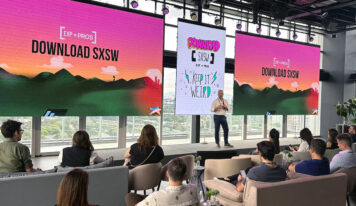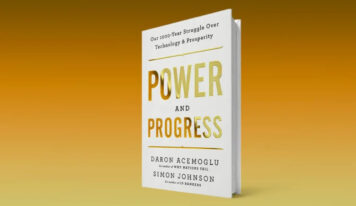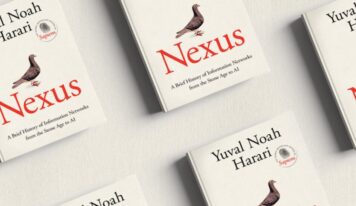Central Ideas:
1 – At X.com, the idea was to abandon the slow-moving banks with their central computers, which took days to process payments, and create an agile type of bank account that moved money with a few clicks and emails. X.com merged with PayPal.
2 – SpaceX, Musk’s rocket company, named the first rocket Falcon 1. To send it into space, the current cost for a rocket with a 250-kilogram payload was $30 million. Musk’s project: 9.5 million for a payload of 635 kilograms.
3 – December 23, 2008: SpaceX received $1.6 billion as payment from NASA for 12 flights to the International Space Station. It was Christmas Eve, the gift was much celebrated.
4 – In mid-2012, Tesla Motors shocked the auto industry by delivering the Model S sedan, an electric vehicle that could go 480 km/hour on a single charge and hit 96 km/hour in 4.2 seconds.
5 – Solar power company SolarCity participates in Musk’s so-called unified field. The businesses are interconnected. Tesla produces battery packs for SolarCity’s end customers. The latter supplies free charging stations to Tesla cars, which in turn exchanges information and ideas with SpaceX.
About the author:
Ashlee Vance is a journalist. She worked for several years for The New York Times, covering Silicon Valley and the technology market. At Bloomberg Businessweek magazine she covered cyber espionage and space exploration. Vance hails from South Africa.
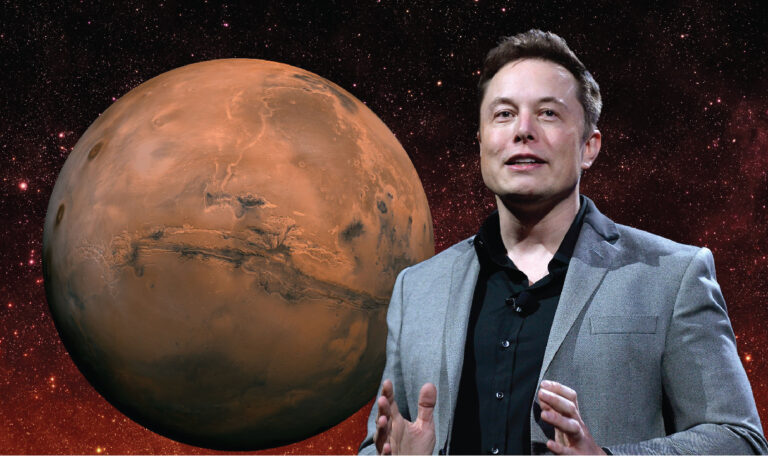
Elon’s World
Any analysis of Elon Musk should start at Space X headquarters in Hawthorne – a suburb of Los Angeles, California, a few miles from the International Airport. There, visitors will find two giant Mars posters hanging side by side on the wall preceding the bay in which Musk works.
The poster on the left depicts the planet as it is today – a cold, barren red orb. The image on the right shows the surface of Mars as a huge green land mass surrounded by oceans. The planet has been heated and transformed to house humans. Musk is determined to try to make this a reality.
Turning humans into space colonizers is his stated life mission.
However, in the first half of 2012, skeptics had to pay attention to what Musk was actually doing. His previously troubled companies were collecting unprecedented successes. SpaceX had sent a supply capsule to the International Space Station and brought it safely back to Earth. Tesla Motors had launched the Model S, a beautiful all-electric sedan that had stunned the auto industry and slapped the solemn Detroit. These two achievements elevated Musk to the most extraordinary level among business titans.
How did Elon Musk achieve these feats? In brief brushstrokes, we will show some of the feats achieved by him, which, besides being confined to our planet, turn to space and even beckon to Mars.
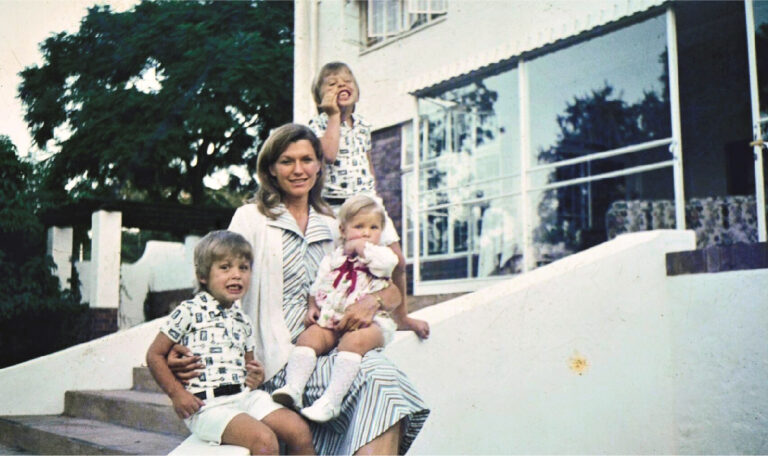
Africa
Although Musk was born and raised in Pretoria, South Africa, his maternal ancestry came from Canada. His maternal grandparents had migrated from Canada to the African country. When Musk decided to migrate to America, he went to the country where his grandparents and great-grandparents had lived. Entry to the United States was via his ancestors’ Canada, who had members of theirs settled in the U.S., in Minnesota, for example.
Joshua Norman Haldeman, his grandfather, was trained in chiropractic but was mostly devoted to farms. He lost his farm in 1934. He could not afford the bank loans for his equipment and had 2,000 acres of land seized. He did odd jobs as a construction worker and rodeo participant, before establishing himself as a chiropractor.
In 1948, Haldeman married a Canadian dance studio teacher, Winnifred Josephine Fletcher, or Wyn, and set up a chiropractic clinic. That year the family, which already had a son and a daughter, gained twins, Kaye and Maye – the latter Musk’s mother.
Haldeman learned to fly airplanes and bought an airplane. With this airplane, the family went on tours all over North America. Things seemed to be going well for Haldeman when in 1950 he decided to give it all up. So in the course of a few months, the family sold the house and the chiropractic and dance rooms and moved to South Africa.
They took with them the Bellanca Corsaire airplane and put it into crates for transport. With this same airplane, the family flew through various parts of South Africa, choosing Pretoria to settle in. The adventure was in the blood, in the DNA of these migrants. Their daughter Maye married Errol Musk. Their first child was named Elon Musk, the hero of these lines. Elon exhibited the characteristics of a curious and energetic boy. He learned with ease, and Maye, the mother, classified her son as bright and precocious.
Although Musk had no close friends in high school, his eccentric interests did not go unnoticed. And Ted Wood, a former classmate, remembered Musk bringing model rockets to school and launching them at recess. This was not the only indication of his aspirations. During a debate in a science class, Elon drew attention for criticizing fossil fuels and speaking in favor of solar energy.
At seventeen, Musk left South Africa for Canada. It was the year 1988. He has recounted this trip quite often and usually resorts to two descriptions about the motivation for the escape. The short version is that Musk wanted to get to the United States as soon as possible and could use Canada as a scale, because of his Canadian ancestry.
The second story he draws on is more socially conscious. Military service in South Africa was compulsory. Musk used to say that he did not want to join the military, as it would have forced him to participate in the apartheid regime.
Canada
When Elon went to Canada, his brother and mother were trying to figure out how to go there as well. When he and his brother Kimbal finally met again in Canada, their headstrong and playful natures blossomed. Elon eventually enrolled at Queen’s University in Kingston, Ontario, in 1989.
Other than his studies, Musk would read the newspaper alongside Kimbal, and the two would tag interesting people they would like to meet. Then they would take turns calling them and asking if they would be available for lunch. Among those approached were the marketing director of the Toronto Blue Jays baseball team, a business columnist for the Globe and Mail, and the top executive of the Bank of Nova Scotia, Peter Nicholson.
During this time in Canada, a deeper relationship emerged between Musk and Justine Wilson, a fellow student at Queen’s, who would later become his first wife. College did Musk some good. He strived to be less the know-it-all, although he found a group of people there who respected his intellectual ability.
College students were less inclined to laugh at or mock his stubborn views on energy, space, and whatever else captivated him at the time. Musk had found colleagues who responded to his ambition rather than picking on it, and he fed off that environment.
In 1992, after spending two years at Queen’s University, Musk transferred to the University of Pennsylvania on a scholarship. He saw the Ivy League college as a possibility to open other doors and set off in pursuit of two degrees: first an economics degree from the Wharton School, and then a bachelor’s degree in physics.
His long-standing interest in solar energy and finding new ways to use energy grew at the University of Pennsylvania. In December 1994, he had to propose a business plan in one of his classes and ended up writing a study: The Importance of Being Solar. The study envisioned an advancement of solar energy technology based on improving materials and building large-scale solar power plants.
Elon’s first startup
In 1995, the Musk brothers were about to create the Global Link Information Network, the startup that would be renamed Zip2. The idea for Zip2 was ingenious. In 1995, few small businesses understood the ramifications of the Internet – they knew next to nothing about how to get on the web and didn’t understand the value of creating a website for their business or even having an entry in Yellow Pages-type listings online.
Musk and his brother hoped to convince restaurants, clothing stores, hairdressers, and other businesses that the time had come to make their presence known to the Internet-surfing public. Zip2 would create a searchable business catalog and link it to maps. The brothers brought Zip2 to life at 430 Sherman Avenue in Palo Alto. They rented a kitchenette – nine feet by six – and purchased basic furniture.
In early 1996, Zip2 underwent a major change. The venture capital firm Mohr Davidow Ventures had heard about two guys from South Africa who were trying to make Yellow Pages for the Internet and met with the brothers. Elon, although still raw in his presentation skills, promoted the company well and the investors were impressed with his energy.
Mohr Davidow invested $3 million in the company. The company also changed its business strategy. At the time it had one of the best internet navigation systems and would improve the technology and expand it from just focusing on the San Francisco Bay Area to encompassing the entire United States. Its main goal would be a new activity. Instead of selling the service door-to-door, the company would create a software package that could be sold to newspapers, which would in turn develop their own directories for real estate, car dealerships, and classifieds.
In April 1998, Zip2 announced a stunning deal to boost its strategy: a merger with its main competitor, CitySearch, in a deal valued at around $300 million. The new company would keep the name CitySearch, and Sorkin, its president, would be in charge of a venture.
On paper, the union looked like a union between equals. CitySearch had developed an extensive set of directories for American cities. It also appeared to have strong sales and marketing teams that would complement Zip2’s, talented engineers. The merger had been announced in the press and seemed inevitable.
But the deal would not stand up for long. Musk, at first in favor of the merger, turned against it. In May 1998, the two companies scrapped the deal and the press attacked the mess. Musk urged the Zip2 board to oust Sorkin and make himself CEO of the company. The board declined. Instead, Musk lost the title of chairman and Sorkin was replaced by Derk Proudian, a venture capitalist from Mohr Davidow.
With the failure of the deal, Zip2 found itself in a difficult situation. It was losing money. Musk still wanted to go the direct-to-consumer service route, but Proudian feared that this required too much capital. Zip2’s engineers were discouraged and worried that they would not be able to beat the competition. Then, in February 1999, suddenly computer manufacturer Compaq Computer offered $307 million in cash for the company. It was like money falling from the sky. The board accepted the offer. Musk and Kimbal walked away with $22 million and $15 million, respectively.
The PayPal Mafia Boss
The sale of Zip2 instilled in Elon Musk a new kind of confidence. Just like the videogame characters he loved, he had moved on. He had solved the Silicon Valley conundrum and had become what everyone at the time wanted to be: a dotcom millionaire.
In January 1999, with Zip2’s board looking for a buyer, he began to formalize his plan to open a bank. The deal with Compaq was announced the following month. In March, he incorporated X.com, a financial startup. If Zip2 had been a clear and useful idea, X.com carried the promise of fomenting a major revolution.
Musk, for the first time, would directly confront a moneyed industry entrenched in its concepts, using for this the hope of subverting established companies.
The creation of X.com would reveal much about Musk’s creativity, tireless determination, bellicose style, and weaknesses as a leader.
He would also once again feel the bitterness of being sidelined in his own company.
Under Musk, X.com put some radical banking concepts to the test. Customers were given a $20 credit card when they signed up to use the service, and another $10 card for every new account holder they referred. Overall, the idea was to abandon slow-moving banks with their central computers that took days to process payments and create a kind of fast-moving bank account where you could move money with a few clicks or e-mails.
Soon X.com had a major adversary. A couple of smart guys named Max Levchin and Peter Thiel had been developing a payment system of their own in their startup called Confinity. The two rented space in X.com’s office and were trying to get owners of Palm Pilot handheld devices to exchange money via the devices’ infrared sensors.
The cordiality between X.com and Confinity came to an abrupt end. Confinity’s founders moved to an office on the same street and, like X.com, began focusing on Internet- and email-based payments with a service known as PayPal. The companies docked into a battle to match each other’s resources and attract more users, knowing that whoever grew the fastest would win.
In March 2000, X.com and Confinity finally decided to stop spending so much, trying to kill each other off, and join forces. The company took the lead in setting the terms of the merger, leaving Musk as the largest shareholder in the combined company, which would also be called X.com.
Soon after closing the deal, X.com raised $100 million with backers. However, the teams could never really face each other. Musk continued to defend the X.com brand, while almost everyone else preferred PayPal. More fights broke out over the company’s technology infrastructure design. PayPal’s team preferred open source software like Linux, while Musk defended Microsoft’s.
What came next was one of the most sordid coups in the long and illustrious history of sordid coups in Silicon Valley. A small group of X.com employees met one night at Fanny &Alexander, a bar in Palo Alto, and discussed how to get Musk out of the picture. Thiel was proposed as CEO.
In June 2001, Musk’s influence in the company rapidly diminished, and Thiel changed X.com’s name to PayPal. It was rare for Musk to leave an offense unpunished. However, he accepted the advisory role and continued investing. Supportive of Peter, he was a prince. In July 2002, eBay offered $1.5 billion for PayPal. Musk and the rest of the board accepted the offer. For Musk, there was $250 million left, enough to make his wildest dreams come true.
Mice in space

It wasn’t just the splendor and grandeur of the city of Los Angeles that attracted Musk. It was also the call of space. After being put out of PayPal, he had started revisiting his childhood fantasies about rockets and space travel and wondering if his calling was something more than creating Internet services.
Musk had chosen Los Angeles with a purpose. The city gave him access to space – or at least the space industry. Southern California’s mild and stable climate had made the city conducive to the aircraft industry since the 1920s when the Lockheed Aircraft Company opened for business in Hollywood.
Howard Hughes, the United States Air Force, NASA, Boeing, and a myriad of other people and organizations have conducted much of their production and cutting-edge experimentation in and around Los Angeles.
Elon’s first interactions with the aeronautics community were with an eclectic center of space enthusiasts, and members of a non-profit group called the Mars Society. Dedicated to the exploration and colonization of the red planet, the Mars Society was planning a fundraising event in mid-2001.
Robert Zubrin, the group’s leader, was impressed with Musk, who, instead of entering $500 for the event, entered $5,000. Zubrin presented Musk with a book about that group’s experiment in the Arctic to reproduce the harsh conditions on Mars. The Mars Society group was experimenting with something called the Translife Mission, a capsule in Earth orbit piloted by a crew of mice, with the goal of researching living and reproduction conditions under a supposed gravity on Mars.
Musk could not understand how NASA tasked with the mission to carry out daring feats in space and explore new frontiers seemed to have no serious interest in investigating Mars. Tom Mueller, a mechanical engineer, helped Elon complete the spreadsheet with performance indicators and the cost of a new low-budget rocket and, together with the rest of the team, would later refine the idea.
The rocket would not carry truck-sized satellites like some monster rockets launched by Boeing, Lockheed, the Russians, and others. Instead, Musk’s rocket would target the lowest tier of the satellite market. In April 2002, he abandoned the idea of a mere publicity event for good and committed himself to erect a space venture. He called Mueller and space engineers, such as Boeing engineer Chris Thompson, and told the group, “I want this real company.”
Founded in June 2002, Space Exploration Technologies was born in modest surroundings. Musk purchased an old warehouse at 1310 East Grand St. 310 East Grand Avenue in El Segundo, a suburb of Los Angeles. Soon the company was renamed SpaceX, the company’s war name.
Musk declared that the first rocket would be called Falcon 1, a reference to the Millennium Falcon ship from Star Wars and his role as architect of an exciting future.
At a time when the minimum cost to send a 250-pound payload into space was $30 million, he promised that Falcon 1 would be able to carry 635 pounds for $6.9 million.
The Falcon launch took place at Kwajalein (Kwal) atoll in Hawaii. Finally, on March 24, 2006, everything was ready. Falcon 1 was put on its launch pad and fired up. The rocket went well in the early stages, but then crashed over the launch site. Musk and the team were not discouraged.
Almost exactly one year later, SpaceX was ready to attempt another launch. On March 15, 2007, it took place. Everything was going according to plan, but this time too Falcon 1 failed when the overall progress was hinting at success for the rocket. Perhaps SpaceX could afford just one more attempt or two. But Musk and the engineers did not feel defeated.
All electric
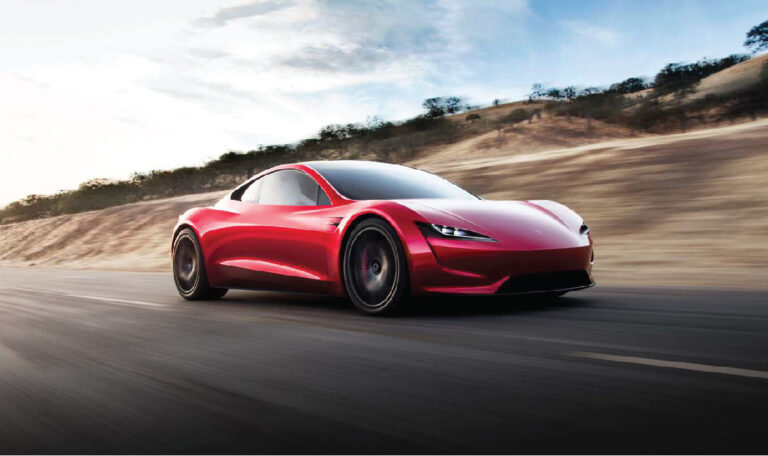
2002: B. Straubel was living in Los Angeles in 2002. He had finished his master’s degree at Stanford and scouted out a few companies looking for something that would challenge him. He decided on Rosen Motors: it had developed one of the world’s first hybrid vehicles – a car that ran without a flywheel and gas turbine and used electric motors to move the wheels. In other words, Straubel was working in an electric car climate. After the firm closed, Straubel continued with Harold Rosen, who was researching an electric airplane.
Harold Rosen had scheduled lunch with Musk at a seafood restaurant near SpaceX headquarters in Los Angeles and brought Straubel along to help sell the electric plane idea. Since Musk didn’t buy it, Straubel announced his parallel electric car project.
The idea touched on Musk’s soft spot that he had been thinking about for years. He was surprised to hear about the progress of lithium-ion batteries. Straubel hung out with the AC Propulsion team and asked Tom Gage, the company’s president, to bring a zero (a type of electric car) so that Musk could drive it, and Musk loved it.
Two other characters join the pursuit of the electric car: Martin Eberhard and Marc Tarpenning who had founded Nuvomedia in 1997. On July 1, 2003, the two kicked off their new company. Eberhard had the idea for the name Tesla Motors, to honor the inventor and pioneer of the electric motor, Nikola Tesla.
The plan of the Tesla cofounders was to get the license for some of AC Propulsion’s technologies for the tzero vehicle and use the Lotus Elise chassis for the body of their car. The plan to approach Musk about Tesla Motors was consolidated when AC Propulsion’s Tom Gage called Eberhard and told him that Musk was thinking about financing something in the electric car area.
Moral of the story. With a $6.5 million investment, Musk had become Tesla’s largest shareholder and its chairman. Musk then called Straubel into the new venture.
What Tesla had, first of all, was the realization that the 18650 lithium-ion batteries had become really good and would continue to improve. The first car designed was named the Roadster. The main goal of Tesla engineers was to focus on developing the battery pack systems, wiring the car, and cutting and welding metal when needed to put it all together.
In July 2006, Tesla decided to reveal to the world what it had been doing. The company’s engineers had developed a red prototype – the EP2 – to complement the black one, and both were shown off at an event in Santa Monica. The Roadsters were beautiful, two-seater convertibles that could go from zero to nearly one hundred miles per hour in four seconds.
Pain, suffering, and survival
When preparing to film Iron Man, Jon Favreau began to consider Musk as an inspiration to Robert Downey, the actor in the film. On many levels, this was a bit of a stretch. Musk is not really the kind of guy who drinks whiskey in the back seat of a Humvee on a military convoy in Afghanistan. However, the press loved the comparison and Musk became more prominent as a public figure.
Tesla had become the darling of Silicon Valley bloggers, who followed the company’s every move and were generous with their coverage. Similarly, journalists covering SpaceX were ecstatic that a young, aggressive company had arrived to pin Boeing, Lockheed, and, to a large extent, NASA. All Musk needed to do was finally made available to the market some of the wonderful things he had been funding.
As 2007 gave way to 2008, Musk’s life became more tumultuous. Tesla had to redo much of the Roadster and SpaceX had dozens of employees living in Kwajalein (Kwaj) waiting for the next Falcon 1 launch. Both companies were gobbling up resources.
On July 30, the Falcon 9 succeeded in a test firing in Texas, with all nine of its engines igniting and producing 385 tons of thrust. Three days later, in Kwaj, SpaceX engineers fueled Falcon 1 and crossed their fingers. The launch, scheduled for August 2, 2008, was aborted on short notice.
On the same day, it was tried again. Then, at the time when the first and second stages would separate, something failed. The fourth and possibly last launch for SpaceX took place on September 28, 2008. The pride of the company’s engineers and the staff was at stake. When the rocket roared off and then took flight, the employees at the company’s headquarters erupted in celebration.
The glow of that victory faded soon after the party ended, and the severity of SpaceX’s financial hell returned to Musk’s top concern. The company had the Falcon 9 project to sustain and received to build another machine – the Dragon capsule – that would be used to carry supplies and, one day, humans to the International Space Station.
Historically, each of these projects would cost a billion dollars. Another financial problem was running rampant at Tesla. Toasting $4 million a month, Tesla needed to close another large round of financing to get through 2008 and stay alive.
Despite so many difficulties, on December 23, 2008, SpaceX received some shocking news. Members of NASA had supported the idea of the company becoming a supplier for the international space station.
SpaceX received $1.6 billion as payment for twelve flights to the station. Everyone smiled, the Christmas present had arrived.
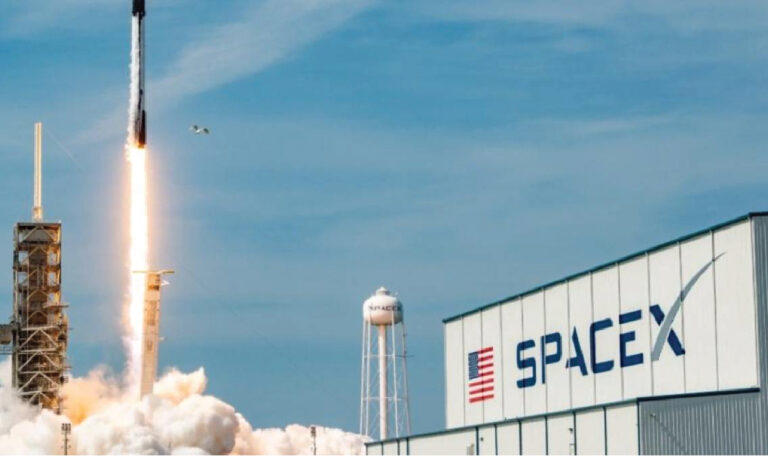
Takeoff
The Falcon 9 has become SpaceX’s cargo donkey. It stands 68.3 meters tall and weighs almost five hundred tons. It is powered by nine engines arranged in an “octree” pattern at its base, with one of them in the center and the others surrounding it. SpaceX sometimes uses the Vandenberg Air Force base in Southern California to launch the Falcon9s.
For Elon Musk, this spectacle has become a familiar experience. SpaceX has gone through a metamorphosis from being the joke of the aircraft industry to one of its most consistent companies. Generally once a month it sends up a rocket carrying everything from satellites for private companies and nations to supplies for the International Space Station.
SpaceX can outperform its competitors in the United States – Boeing, Lockheed Martin, Orbital Sciences – with unbelievably lower prices. It also offers American customers peace of mind that its rivals cannot provide. While these competitors rely on suppliers from Russia and other countries, SpaceX produces all its machines from scratch on American soil.
SpaceX’s hiring model places some emphasis on getting the best grades at the best colleges. But most attention is devoted to identifying engineers who have exhibited Type A personality traits throughout their lives. The company’s recruiters look for people who have excelled in robot-building competitions or who are fond of car racing and have built unusual vehicles.
SpaceX had come first again: it was the only private company to dock on the International Space Station. A few months later it received $440 million from Nasa to continue developing Dragon so that it could transport people. For Nasa, Musk managed to keep the safety factor while cutting costs.
The revenge of the electric car
In mid-2012, Tesla Motors shocked its complacent colleagues in the automotive industry: it began shipping the Model S sedan to the market. This fully electric luxury vehicle could travel more than 480 kilometers on a single charge. It reached 96 kilometers per hour in 4.2 seconds. It accommodated up to seven people if optional rear-facing child seats were used. It also had two trunks.
The Model S runs on an electric battery pack, which represents the base of the car, and a watermelon-sized electric motor located between the rear tires. Getting rid of the motor and the noise of its shrill machinery also made the Model S quiet.
It outperformed most other luxury sedans in terms of raw speed, mileage, drivability, and luggage space.
Motor Trend celebrated the Model S as the first car without a combustion engine to win its top award and stated that the vehicle handled like a sports car, moved with the smoothness of a Rolls-Royce, had the endurance of a Chevy Equinox, and was more efficient than a Toyota Prius.
Franz Von Holzhausen, an experienced designer at General Motors and other industries, was tasked with producing a design to match the Model S. Six months after his arrival at the company, a press event was held at SpaceX to show off the new shape, the new face of the Model S sedan. From a distance, the model on display looked glamorous and refined. In fact, the sedan was barely kept in one piece. It still had the same frame as a CLS, although no one in the press knew that, the body panels part and the hood were attached to the frame by magnets.
The confusing reality behind the display was that Tesla’s chances of moving the Model S forward from being a prototype to becoming a saleable car were infinitesimal. The company had the technical knowledge and the will to work. All that was missing was money and a factory that could produce by the thousands.
In May 2009, things began to unravel for Tesla. The Model S had been released and Daimler thereafter acquired a 10% share of the company for $50 million. The two companies also entered into a strategic partnership, whereby Tesla would supply the battery packs for 1,000 of Daimler’s Smarts. This money was important and helped Tesla for quite a while. It was the almighty Daimler investing in the electric car.
In January 2010, the Department of Energy signed an agreement with Tesla for a $465 million loan. It was quite a lot of money, but it was only a fraction of the $1 billion for a new vehicle. There was still a car factory to be had. General Motors and Toyota had partnered to erect a joint industry, Nummi, in Fremont, California. This plan was abandoned because of the recession in the USA.
Suddenly, Tesla suddenly had the chance to buy such an abandoned factory of 492,000 square meters in its vicinity. Tesla paid 42 million dollars for a large part of the factory, which, before the crisis, was worth 1 billion dollars. The company had basically gotten a factory for free, including the heavy metal stamping machinery and other equipment.
It was a sequence of lucky breaks. The way was open for an initial public offering of stock, which took place on June 29, 2010, managing to amass $226 million.
In mid-February 2013, Tesla plunged into a crisis. If it could not convert its reserves into purchases soon, the factory would be idle, which would cost it an immense amount of money. The situation was painful.
Musk asked employees from recruiting, design, engineering, and other sectors to get on the phone to turn car reservations into actual purchases. Meanwhile, he was in talks with Google’s friend Page to get some financial backing, or even acquisition, of the mega-company. The negotiations dragged on.
In the meantime, the five hundred or so employees that Musk had turned into car salesmen soon closed the sale of a huge volume of vehicles. Tesla, which had only a few weeks left with cash in the bank, sold enough units within fourteen days and pulled off an astonishing fiscal quarter.
It shocked Wall Street on May 8, 2013, by reporting its first profit as a publicly traded company – $11 million – on $562 million in sales. Just a few weeks after revealing its first quarter results, Tesla paid off its $465 million loan with the government early and with interest. The deal with Google was no longer necessary.

Elon Musk’s unified field theory
The Rive brothers, Elon Musk’s cousins who lived with him in South Africa, soon decided after arriving in America that there must be an easier way to sell their technology expertise than knocking from door to door. So they developed some software that allowed them to remotely control their customers’ systems and automate many standard business-critical tasks, such as installing application updates.
The programs soon became the basis of a new company called Everdream, and the brothers promoted their technology in compelling ways. In 2004, Lyndon and his brothers Peter and Russ were looking for a new challenge. Musk knew that Lyndon and the brothers wanted something big. He suggested they examine the solar energy market. He had studied it a bit and thought it was promising.
The Rive decided to start a company called SolarCity in 2006. Unlike other companies, they would not manufacture their own solar panels. Instead, they would buy them and do everything else in-house.
They created a program to analyze a customer’s utility bills, the position of their home, and the amount of sunlight it typically received – factors that would determine whether going solar made sense. The company had its own teams to install the solar panels and set up the financing, whereby the customer did not have to pay upfront for the panels.
Musk had helped his cousins devise this structure and had become the company’s chairman and largest shareholder, owning one-third of SolarCity. Seven years later SolarCity had become the largest solar panel installer in the country. In 2012, it went public and its stock rose in the following months. By 2014, it was valued at $7 billion.
SolarCity, like Musk’s other ventures, represents less a business opportunity than a worldview.
Long ago, Elon had decided – in his rather rational way – that solar energy made sense: the amount that hits the Earth’s surface for an hour corresponds to the annual value of the world’s energy consumption from all other sources combined. In 2014, SolarCity acquired a solar cell manufacturer called Silevo for $200 million, which marked a huge shift in strategy.
After making the financing available, creating the storage units, and taking over solar cell manufacturing, it was clear to observers close to SolarCity that the company had transformed into something akin to a utility provider.
Moreover, SolarCity is an essential part of what can be thought of as Musk’s unified field theory. All of his businesses are interconnected in the short and long term.
Tesla produces battery packs sold to end customers by SolarCity; SolarCity supplies the automaker’s solar panel charging stations, helping it provide free recharges to its drivers. Recent Model S owners have generally gone on to aim for the “Musk lifestyle” and outfitted their homes with solar panels. Tesla and SpaceX also help each other. They exchange knowledge about materials, production techniques, and the complications of operating factories that build a lot of things from scratch.
In the meantime, Mars has not been forgotten by Musk. It is interesting to hear: “I think that for every flight to Mars, you have to launch the spacecraft and then stop it in a parking orbit, refueling its tanks with propellant. In essence, the spacecraft would use a good portion of its propellant to get into orbit; then a tanker would be sent to refuel it with propellant so that it can depart for Mars at high speed and get there in three months instead of six, and with a large payload. I don’t have a detailed plan for Mars, but I know of something that would at least work: a methane-based system with a big booster, a spacecraft, and a tanker.”
Review: Rogerio H. Jönck
Images: Reproduction
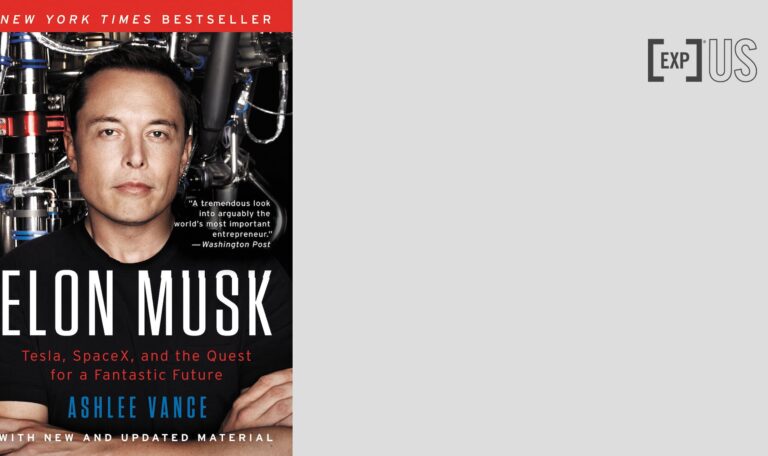
Factsheet:
Title: Elon Musk: Tesla, SpaceX, and the quest for a fantastic future
Author: Ashlee Vance
![[Experience Club] US [Experience Club] US](https://experienceclubus.com/wp-content/uploads/2021/03/laksdh.png)
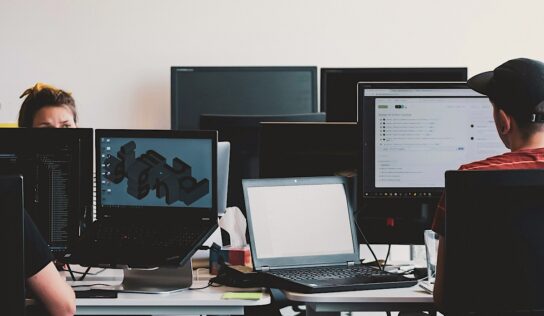



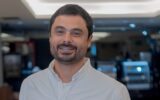
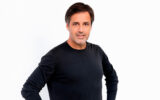
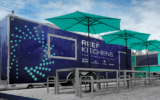
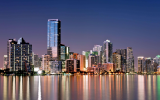

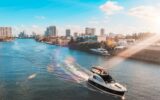
![[Experience Club] US [Experience Club] US](https://experienceclubus.com/wp-content/uploads/2021/03/logos_EXP_US-3.png)




